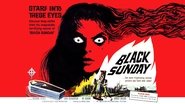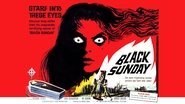KnotMissPriceless
Why so much hype?
Evengyny
Thanks for the memories!
Kaydan Christian
A terrific literary drama and character piece that shows how the process of creating art can be seen differently by those doing it and those looking at it from the outside.
Kaelan Mccaffrey
Like the great film, it's made with a great deal of visible affection both in front of and behind the camera.
jadavix
"Black Sunday", also known as "The Mask of Satan", is considered to be Italian horror maestro Mario Bava's directorial debut, after he did uncredited work on a few prior movies. It is also the film that launched his career on the international stage.It is not surprising to discover that Bava had been a cinematographer for almost twenty years before he directed "Black Sunday". Simply put, the movie looks beautiful. The photography is exquisite, and the framing of each shot perfectly uses the film's quintessentially Gothic scenery.The movie is, basically, like looking at a book of Gothic photography come to life.This also has the correlative of making the movie's plot and characters distant and uninvolving.Beautiful photography is by its nature distancing. It makes you aware of the beauty of its subject, certainly, but also in so doing, makes you aware of its distance from you, thumbing through the book in your living room or book shop as you probably are.Cinema, with its marriage of the moving image with sound, can dissolve that barrier."Black Sunday", unfortunately, fails to do this. The story is something to do with an evil witch-vampire played by the brick-jawed Barbara Steel. She does have a very memorable introduction as we see her killed in one of horror's most memorable death sequences: a mask with nails on the inside is nailed onto her face, blood gushing from underneath it.Two hundred years later (in 1830 or thereabouts) some men stumble onto the tomb of the witch, and cutting his hand, one of the guys accidentally wakes her up. He also meets a descendant of the witch - also played by Barbara Steel in a double-role - and is struck by her beauty. Of course, the vampire-witch wants revenge on the descendants of those who had her executed, and commands her brother-in-arms to rise from his grave and start killing.I found it impossible to care about this movie beyond its beautiful looks. Part of the problem is Steel; with a double role, she doesn't make enough of an impression as either of the characters she plays. You will not be surprised to read that she did not get along with Bava on the set of this movie. Her performance seems reluctant, like the guy behind the camera wants her to show something she didn't sign on for.Another problem is that the movie is unnecessarily confusing toward the end. I admit I lost track of exactly what was going on.It seems as though Bava devoted all his energy to the filming of locations and objects, without bothering to get us close to the story or characters. Perhaps the defiant and brick-jawed Barbara Steel put him off?
Giallo Fanatic
Mario Bava's directing debut, a movie so rich in atmosphere it feels like you're in the movie and not just watching a movie. The atmosphere of the movie got me in its grip in the beginning of the first 10 seconds or so into the movie. Not many movies have that effect on me. It was an atmosphere rich in feeling unwanted and guilt that I spent the first 5 minutes or so of the movie to get over that feeling. Indeed, the scene where the vampire witch gets her face nailed with the Mask of Satan was a scene that set the whole tone for the rest of the movie. Incredibly enough the movie did not break that atmosphere until the end. Only a few movies keeps the same atmosphere from start to finish, Lawrence of Arabia, 2001: A Space Odyssey and Barry Lyndon comes to mind. I am not sure if it was the acting, the cinematography, the script or the direction but definitely the movie was well handled with a great sense of sensibility. Things happening in the movie did not seem to be the result of coincidence, everything seemed to be pieced greatly together by Mario Bava.Director: Mario Bava, written by: Ennio De Concini and Mario Serandrei, plot: survive, genre: horror, year of release: 1960, themes: heresy, life and death, summary: a vampire witch gets back from the dead when a young doctor accidentally spills blood in her mouth, then the witch stalks a young woman who resembles her in order to become fully alive. Like written earlier the movie has a strong feeling of being unwanted and guilt, the feeling of being wrong, the feeling of being unaccepted. This is where I get the feeling one of the movies's main themes are heresy and it was the Christians who nailed the Mask of Satan on the witch's face for practicing witchcraft. Witches have mostly been portrayed as those inhuman monsters who deserve to die in the name of God. That is how the Christians saw them and had them portrayed because they were full of bigotry. That bigotry led to a lot of women were burned as witches even for the most trivial reasons. But anyway, the movie captures that mood of heresy pretty damn good. So good it felt like I was in the movie.Barbara Steele in her portrayal of the witch was both creepy and wicked. She definitely had a very strong on-screen presence but she also had a strong off-screen presence, making most scenes unsettling to watch because it felt like the power of the witch was big enough to extend beyond the tomb she was lying in. What is scariest about her is that she wants what the main characters have and what she misses: life. Now the thought of an already dead person coming back from the dead in order to take your life is scary in and on itself. Made creepier by Barbara Steele's acting. Anyway, the movie like written earlier does not break the mood it established which is quite astonishing. The movie keeps its atmosphere without succumbing to jump scares, which I respect a lot. Because horror is a mood, an atmosphere, a feeling. Which many modern horror movies have forgotten all about. The reliance on that mood in this movie is staggering even though there isn't any gore or violence. This is a movie I will keep respecting until the day I die. Awesome movie.
Johan Louwet
I Vampiri pleasantly surprised me so I really felt like watching some more of Mario Bava's movies. Actually "Black Sunday" or "The Mask of Satan" does resemble I Vampiri in a way. Again there is a woman wanting to restore the beauty she once had. I was mostly impressed by the atmosphere that this movie breaths greatly helped by the black/white cinematography and the constant fog outside when darkness falls. The castle was a stunning setting. I was also impressed by the horror effects like the piercing mask, the evil prince rising from his grave, the giant bat and the witch restoring her life from the body of the beautiful princess. Both of these roles are played by the amazing Barbara Steele. Hardly have I seen a woman with such a beautiful face and expressive eyes. Nice debut also from the young Germana Dominici who plays Sonya the innkeeper's daughter.
Edgar Soberon Torchia
When "La maschera del demonio" was released in 1960, cinemas displayed a warning to those who could be affected by its strong images, right from the first sequence when Asa, a Moldavian witch or noble ascent, is sentenced to death by the Inquisition, and the title mask is nailed to her smooth, peculiarly beautiful face, with big eyes, high cheekbones, and fleshy lips. Director Mario Bava, who for the first time was in complete control of a motion picture, was subtle and graphic at the same time, in this adaptation of Nikolai Gogol-s long tale "Viy". A reading of the source against a screening of the motion picture would reveal the resorts of film adaptations: for a more faithful version, one should see the Soviet film "Viy" (1967). But the writers of "La maschera del demonio" opted for distancing from the original, and the result was an autonomous product, that still had potent echoes of Gogol's story, illustrated by two examples: one, the ominous vacation trip of the seminarists in the original, becomes the fateful journey of Dr. Kruvajan and his young assistant, Dr. Gorobec, key figures in Asa's resurrection; and two, Gogol's passage of a young novice who kills a witch in a cemetery, is reworked in three lines of action: a girl reluctantly milks a cow in a stable adjacent to the town's graveyard, where simultaneously Javutich (Asa's cousin, lover, and assistant) is raising from his grave, and not too far Dr. Kruvajan is picked up by a ghostly carriage to take him back to Asa's crypt. Moreover, the dead witch —who in "Viy" is first killed in the cemetery and later turns out to be a landowner's dead daughter— has accordingly a dual visual resonance: the face of witch Asa is the same as Katja's, daughter of one of Asa's relatives, both played by British actress Barbara Steele. Other resources and images are strictly Bava's: Asa's dead, wax-like visage, intact for centuries, except for empty eye-sockets; Katja's first appearance with a black mastiff, her languid expression as Asa vampirizes her with a touch, or the revelation of Asa's putrid body... Bava was also his own cinematographer (assisted by Ubaldo Terzano), excelling himself with striking, Gothic, black and white images; and the film was cut by classic film editor Mario Serandrei, who also contributed to the script. Roberto Nicolosi's score is effective in general terms, with the possible exception of the piano romantic theme, which sounds too contemporary for the visuals. (When the film was bought by American International Pictures for distribution in the United States, Les Baxter wrote a new score). Besides Steele (who was immediately crowned Queen of Horror) and British leading man John Richardson as Katja's suitor, Dr. Gorobec, three prestigious Italian character actors completed the main cast: Andrea Checchi as Dr. Kruvajan; Ivo Garrani as both the Inquisition leader and Katja's father; and Arturo Dominici as the tall, sinister and frightening Javutich. Although since the release of "La maschera del demonio" motion pictures have augmented explicitness and reduced suggestion, Bava's first film won a place in the history of cinema for giving new breath to the horror genre all over the world, in a time when it was overlooked by most film critics and audiences.






